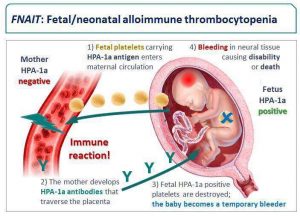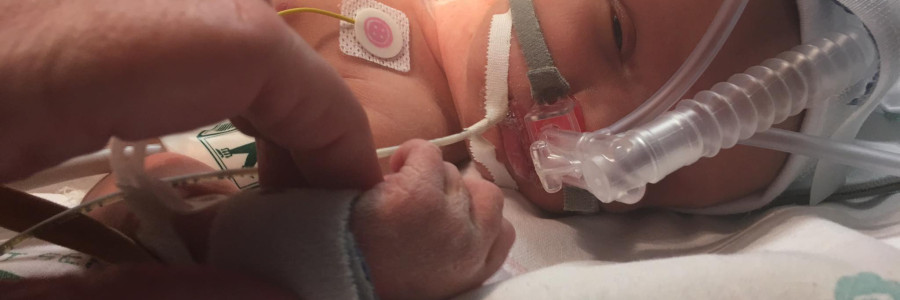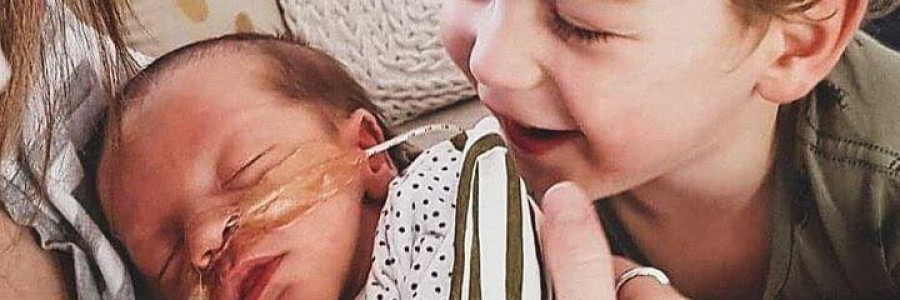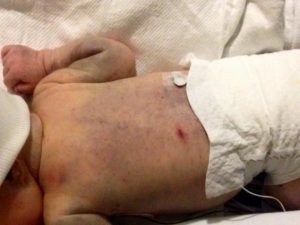Naitbabies is a small Charitable Incorporated Organisation, registered in the UK and run by families who have been diagnosed with Foetal and neonatal alloimmune thrombocytopenia – FNAIT.

What is FNAIT
FNAIT is a life threatening bleeding disorder that results from incompatibility between mother and baby for platelet-specific antigens.
This may cause the maternal immune response to produce antibodies against platelet antigens that have been inherited paternally. Antibodies then destroy fetal platelets, leaving the fetus or neonate at risk of hemorrhaging into major organs such including the brain – ICH, stomach, spinal cord, kidneysand liver.
Babies are at serious risk of death or suffering lifelong disabilities.
Although well documented most people have never heard of FNAIT including, surprisingly, many obstetricians and midwives. Diagnosis is often not made until the second, third or even fourth pregnancy. The possibility of FNAIT being dismissed by clinicians as ‘too rare’ and bruising as ‘birth trauma’ or ‘ a newborn rash’.
Neonatal alloimmune thrombocytopenia affects 0.1% of births, with maternal antibodies crossing the placenta as early as 14 weeks’ gestation.
It is the most common cause of severely low platelets (thrombocytopenia) in an otherwise well neonate and may cause bleeding into major organs such as the stomach or spinal cord.
The most feared bleeding is into the baby’s brain – intracranial hemorrhage ICH.
 Affecting approximately 1:1000 babies the true figure is unknown, due in part, to misdiagnosis and under-diagnosis.
Affecting approximately 1:1000 babies the true figure is unknown, due in part, to misdiagnosis and under-diagnosis.
Frequently thrombocytopenia is mild and the affected baby remains largely asymptomatic and therapeutic interventions are not indicated.
Baby’s with severe thrombocytopenia may exhibit hemorrhaging into major organs such as the spinal cord or stomach at, or a few hours after delivery. Intra-cranial hemorrhage may lead to death (10%) or long term disability (20%) which approximates to 63:100,000 babies.
 Signs of thrombocytopenia in a neonate are ICH, petechiae, ecchymosis, hydrocephalus, and bradycardia.
Signs of thrombocytopenia in a neonate are ICH, petechiae, ecchymosis, hydrocephalus, and bradycardia.
Milder visible signs (left) are not an indication of severity of platelet destruction and are often wrongly dismissed as bruising due to ‘birth trauma’.
There may be no external signs evident.
Neurological disabilities caused by brain hemorrhaging include hydrocephalus, cortical blindness, epilepsy, cerebral palsy, precocious puberty, sensory, motor and cognitive delays.
Recent research has indicated that miscarriage, inter uterine growth restriction (IUGR) and retinal damage is also associated with an FNAIT diagnosis.
Treatment for further pregnancies is available. If subsequent pregnancies are untreated there is a risk that future platelet counts may get progressively worse. Although stressful, weekly IVIG infusions (with or without corticosteroids) have an extremely high success rate.

FNAIT is the platelet equivalent of the red blood cell disease HDFN – Rhesus disease, which has been screened for since the late 1960’s. NO country screens for this condition although it is very well documented and has been since the 1950’s.
Antenatal screening for FNAIT should be standard and routine!!!!
Much rarer diseases are screened for
 Based in the UK we are the only registered ‘not for profit’ for fetal and neonatal alloimmune thrombocytopenia and we offer a support network and help to sufferers worldwide.
Based in the UK we are the only registered ‘not for profit’ for fetal and neonatal alloimmune thrombocytopenia and we offer a support network and help to sufferers worldwide.
We support research into FNAIT, its causes, treatment and prevention.
Naitbabies rely entirely on publicly donated funding. Our Board members are all volunteers and are very grateful for each and every penny/dime spared and use it wisely!!! We may be small but we are mighty in heart!!!!
__________________________________________
For further information please email info@naitbabies.org
If you have been diagnosed with, or suspect that you may have Fetal and neonatal alloimmune thrombocytopenia and would like to join our private parents support forum please email us here
__________________________________________
Latest News
 May 2024 – Doctor Thijs W de Vos receives prize for the best dissertation ...
May 2024 – Doctor Thijs W de Vos receives prize for the best dissertation ...On April 13th 2023, at Leiden Medical University Center, The Nethe...
 Care Design New York – Member Spotlight – Meet Chris!!!
Care Design New York – Member Spotlight – Meet Chris!!!MEET NAIT MIRACLE CHRIS!!!! Chris is 23 years old. He was born with a rare disea...
 10 April 2024-FNAIT Collaboration Agreement between Momenta Pharmaceuticals, Inc...
10 April 2024-FNAIT Collaboration Agreement between Momenta Pharmaceuticals, Inc...Rallybio Announces Collaboration to Advance Therapeutic Solutions for Pregnant I...
Our Stories
 Bellavance Family
Bellavance FamilyCharlene Bellavance British Columbia Canada My NAIT Journey My name is Charlene...
 Whitley Family
Whitley FamilyKiera and Craig Whitley British Columbia Canada Kiera’s Unusual NAIT Story...
 Harrison Family
Harrison FamilyHarrison Family Tennissee, USA Lily’s NAIT Journey When I found out I was...
Events
 FNAIT Awareness Week 25 – 31 March 2024
FNAIT Awareness Week 25 – 31 March 2024FNAIT Awareness Week 25 – 31 March 2024 This is the week our suppor...
 July ’22 – Alan’s Yorkshire Three Peaks team fundraiser for Na...
July ’22 – Alan’s Yorkshire Three Peaks team fundraiser for Na...Yorkshire 3 Peaks Challenge 2 July 2022 Huge thanks to Alan Halliday and his tea...
 FNAIT Awareness Week 25 – 31 March 2022
FNAIT Awareness Week 25 – 31 March 2022FNAIT Awareness Week 25 – 31 March 2022 Unfortunately, due to the o...
Note:
Research and treatment protocols are ongoing.
Always consult a qualified medical specialist in this field. Cases of neonatal alloimmune thrombocytopenia should be managed in specialised Fetal Medicine Units.
We are not medical doctors. All references and materials are for educational and information purposes only.









